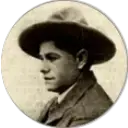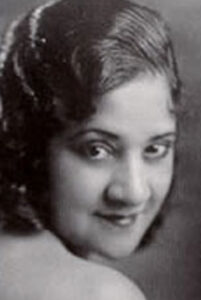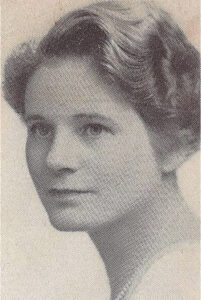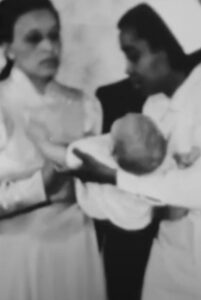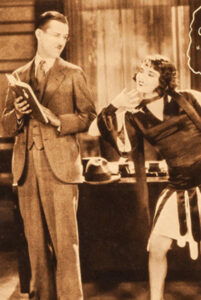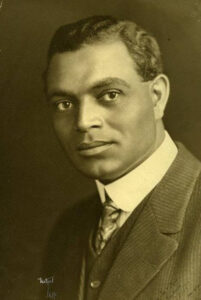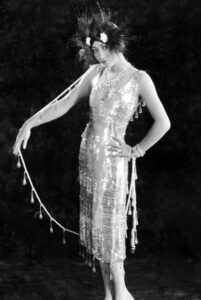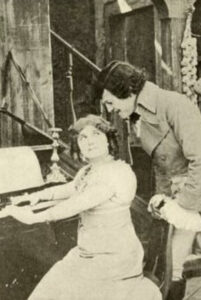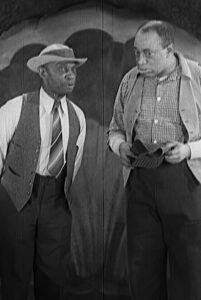The AFI Catalog of Feature Films, long considered to be the world’s most comprehensive record of the first century of American cinema, is expanding its historical representation of the art form. As revealed in its very name, the AFI Catalog of Feature Films has focused its lens over the past 50 years on the significance of feature-length movies, overlooking decades of short films created by pioneering storytellers who were defining the medium, well before the first feature film ever flickered before an audience. BEHIND THE VEIL, named after the 1914 short film by the prolific director Lois Weber, presents AFI’s groundbreaking new inclusion of short films in the canon, paving the way for scholarship to shine a light on cinema’s true beginnings.
“AFI is well-positioned to prompt a new evolution in the way history is represented to the masses, and I am so glad that it is reconsidering short films as an art form alongside feature films in order to shine a light on filmmakers who are widely unknown.”
An Inclusive History
...In the beginning, short films
were the only films
AFI has added over 45,000 short films released from the dawn of the film industry to the advent of sound technology into the database, nearly doubling the AFI Catalog’s exhaustive documentation of feature films and rectifying a preference in film scholarship that has long favored feature-length titles. With short films now positioned alongside features in the historical record, AFI unequivocally cements their creators and their content in film history, providing unique information to document their significant impact on our cultural heritage.
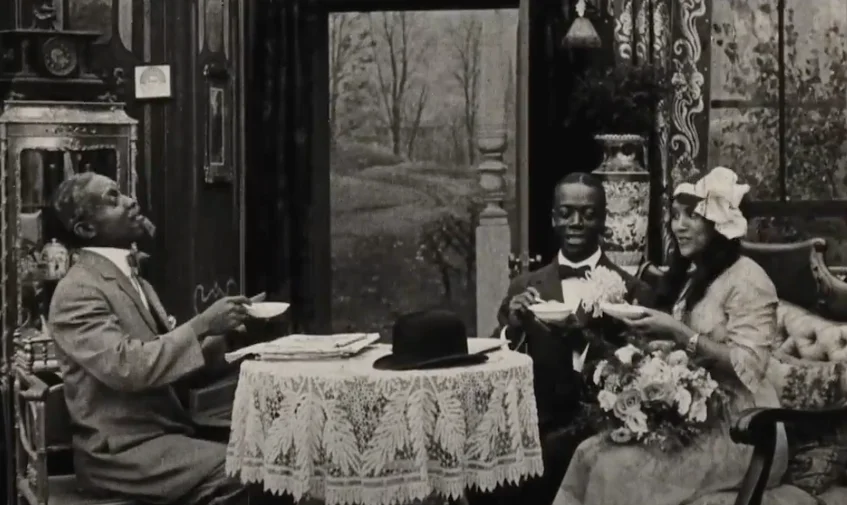
A FOOL AND HIS MONEY (1912)
Directed by Alice Guy Blaché
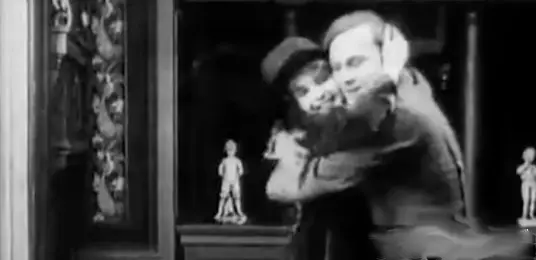
MATRIMONY’S SPEED LIMIT (1913)
Directed by Alice Guy Blaché
BEHIND THE VEIL reveals not only an untold chapter in cinema history, but also a “who’s who” that extends beyond the names and players commonly accepted to be among the art form’s pioneers – uncovering influential and imperative work from artists that have widely been relegated to the margins of history to date, particularly women and filmmakers of color.
For the first time, step “behind the veil” of historical bias for a more complete, accurate and inclusive picture of America’s legacy...
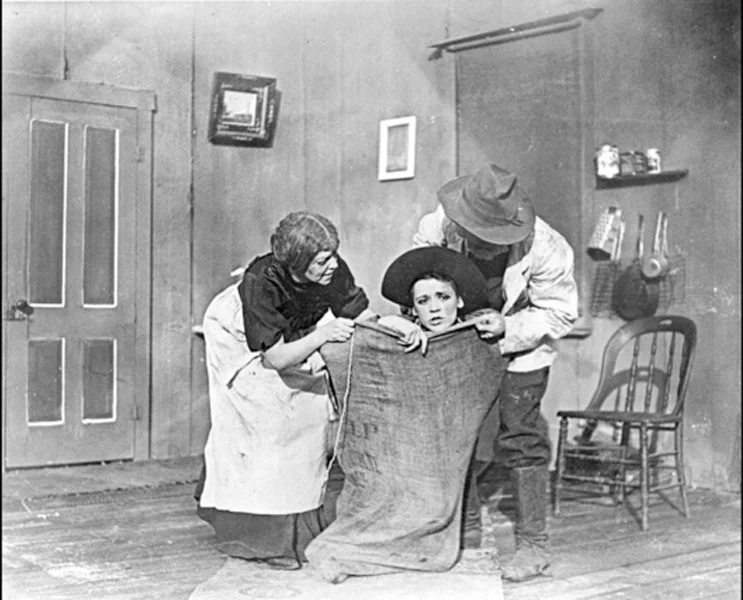
FURTHER ADVENTURES OF A GIRL SPY (1910)
Directed by Sidney Olcott. Written by Gene Gauntier.
Promoting Scholarship and
Interest in Short Films
While there is scholarly debate surrounding the identification of the first feature film, with mentions of FROM THE MANGER TO THE CROSS (1912) and RICHARD III (1912) , it is widely believed that the era of feature filmmaking was ushered in around 1914, with THE SQUAW MAN and Lois Weber’s adaptation of THE MERCHANT OF VENICE as examples, and later in 1915, with THE BIRTH OF A NATION. These pictures, among many others, demonstrated there was a market for longer running storylines, but short films continued to be an indispensable aspect of the movie-going experience. Due to relatively inexpensive production costs compared to feature filmmaking, working in short film was markedly different from the film industry we know today – a landscape less burdened by budgetary concern and not yet dominated by studios. This meant, ostensibly, that the opportunity existed for anyone with the will and the vision to share their stories – resulting in not only an era of unconstrained innovation, but also of representation among marginalized groups that would be unprecedented in later periods.
Women directors in particular were more prolific in the short film format than in features (see data below) – and, in fact, were some of the essential authors of the early art form. Further, burgeoning technologies such as sound and color were first tested in short films due to their relative affordability, underlying the importance of short films as cultural artifacts. The omission of shorts from the canon has therefore resulted in a dearth of information about the women and filmmakers of color who worked in early American cinema. BEHIND THE VEIL has allowed AFI to concentrate on these largely forgotten pioneers and to celebrate their vital contributions.
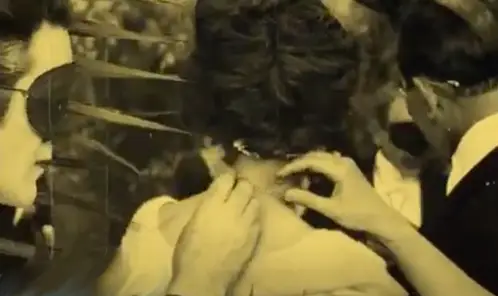
UNMASKED (1917) Directed by
Grace Cunard and Francis Ford

THE NEW YORK HAT (1912)
written by Anita Loos
In-depth Research and Analysis
6,000 Short Films Documented
Of the 45,000 film records added to the AFI Catalog, 6,000 were selected for the richness of voices in early American cinema and were enhanced with further in-depth historical research. Using contemporaneous sources and rich archival data, the AFI Catalog has compiled new information about these important cultural artifacts and now presents the most complete records on short films currently available to scholars and film enthusiasts. Explore AFI’s data about some of the most prolific short film content creators and performers working between 1910 and 1933 – and how their achievements in short films compared to their work in features.
“This will be the first dataset of its kind for any industry.”– Dr. Karen Ward Mahar, Siena College
DIRECTORS
Top 10 Short Film Directors
In the Silent Film Era
While women represented a relatively small percentage of the directors working in the short film era –making up only 2.4% of short film directors working during that time – the women who did establish themselves behind the camera were influential and pioneering, and among the key drivers of the burgeoning art form.
Women were also twice as likely to direct SHORT FILMS in comparison to feature films.
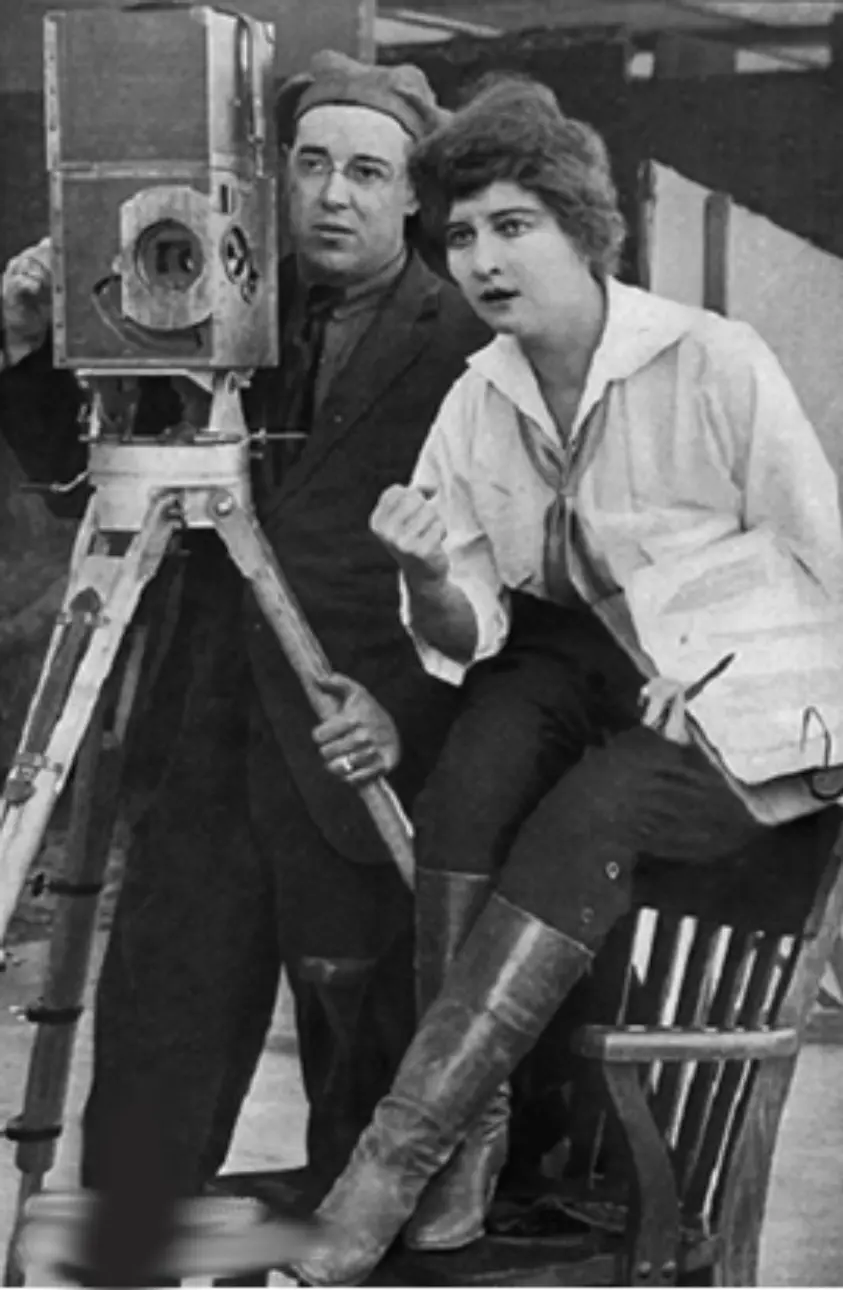
next to a cameraman, photo in Photoplay
magazine , January 1916
Top 10 Most Prolific Women Directors
In the Silent Film Era
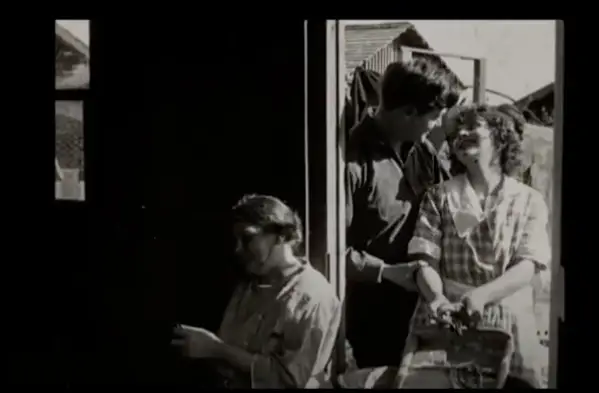
ELEANOR’S CATCH (1916)
directed by Cleo Madison
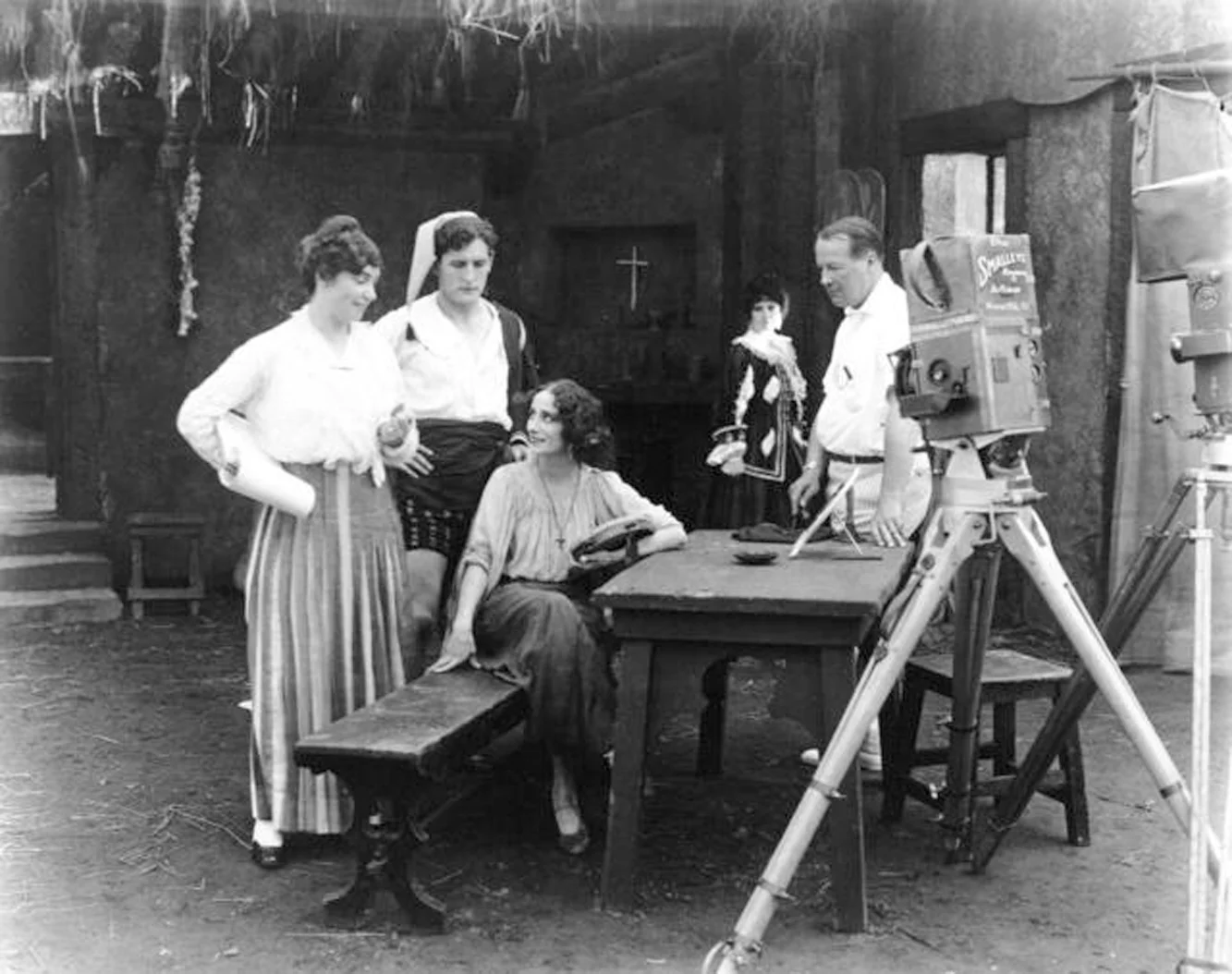
Production Still, THE DUMB GIRL OF PORTICI featuring Lois
Weber, Anna Pavlova and Phillips Smalley
“Without having short films in the database,– Dr. Daisuke Miyao, University of California, San Diego
researchers are only getting access to part of the story.”
WOMEN WRITERS
Focus onGrace Cunard
Getting her start as a stage actress in her teenage years, Grace Cunard (1893–1967) went on to become not only a star of the silent screen but also a director and writer in her own right, helping to pave the way for women in film production. Along with being a credited performer in well over 150 films (including immensely popular serials LUCIILLE LOVE, THE GIRL OF MYSTERY and THE ADVENTURES OF PEG O’ THE RING),Cunard found the most opportunity in the short film medium, directing over 20 shorts in just six years and writing over 60 scenarios, often partnering with filmmaker Francis Ford (brother of the famed Western director John Ford). Considering the fluidity of production roles behind the scenes during those early years of the industry, it is likely that Cunard’s contributions to short films were even more consequential than what is preserved in her existing credits.
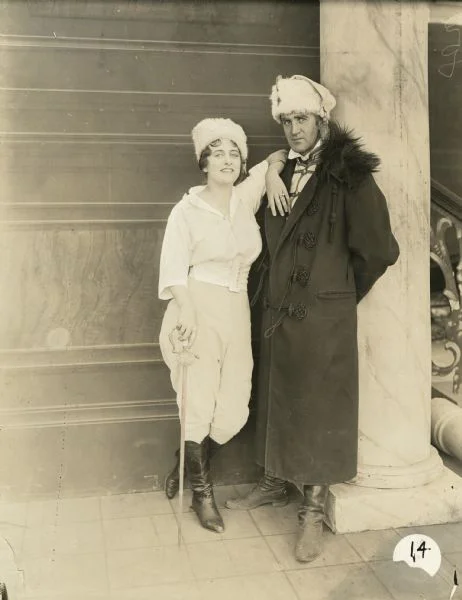
Ford in a publicity still for
THE BROKEN COIN

Top 10 Most Prolific
SHORT FILM Women Writers
In the Silent Film Era
Top 10 Short Film Genres Written by Women
In the Silent Film Era
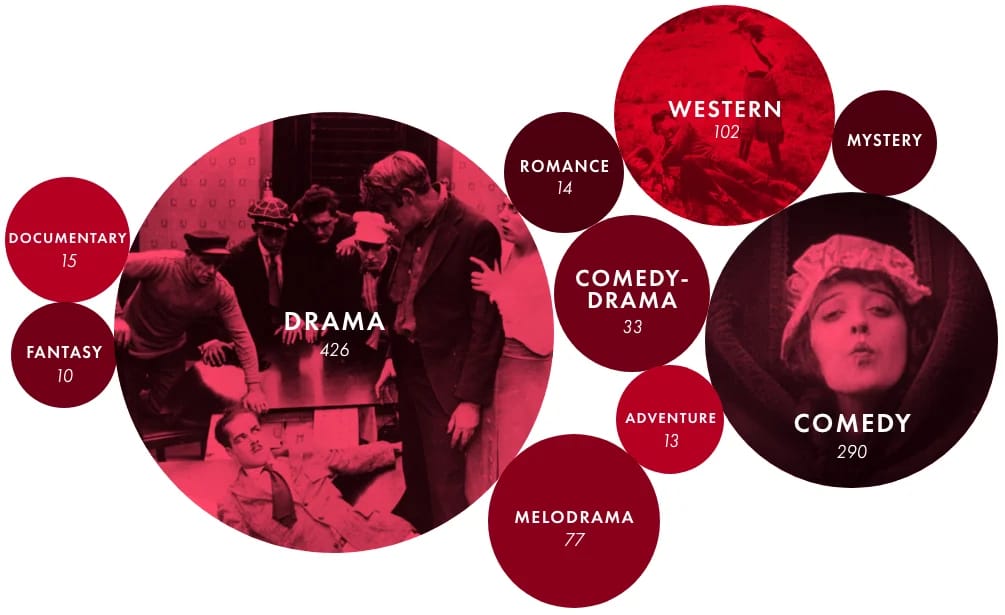
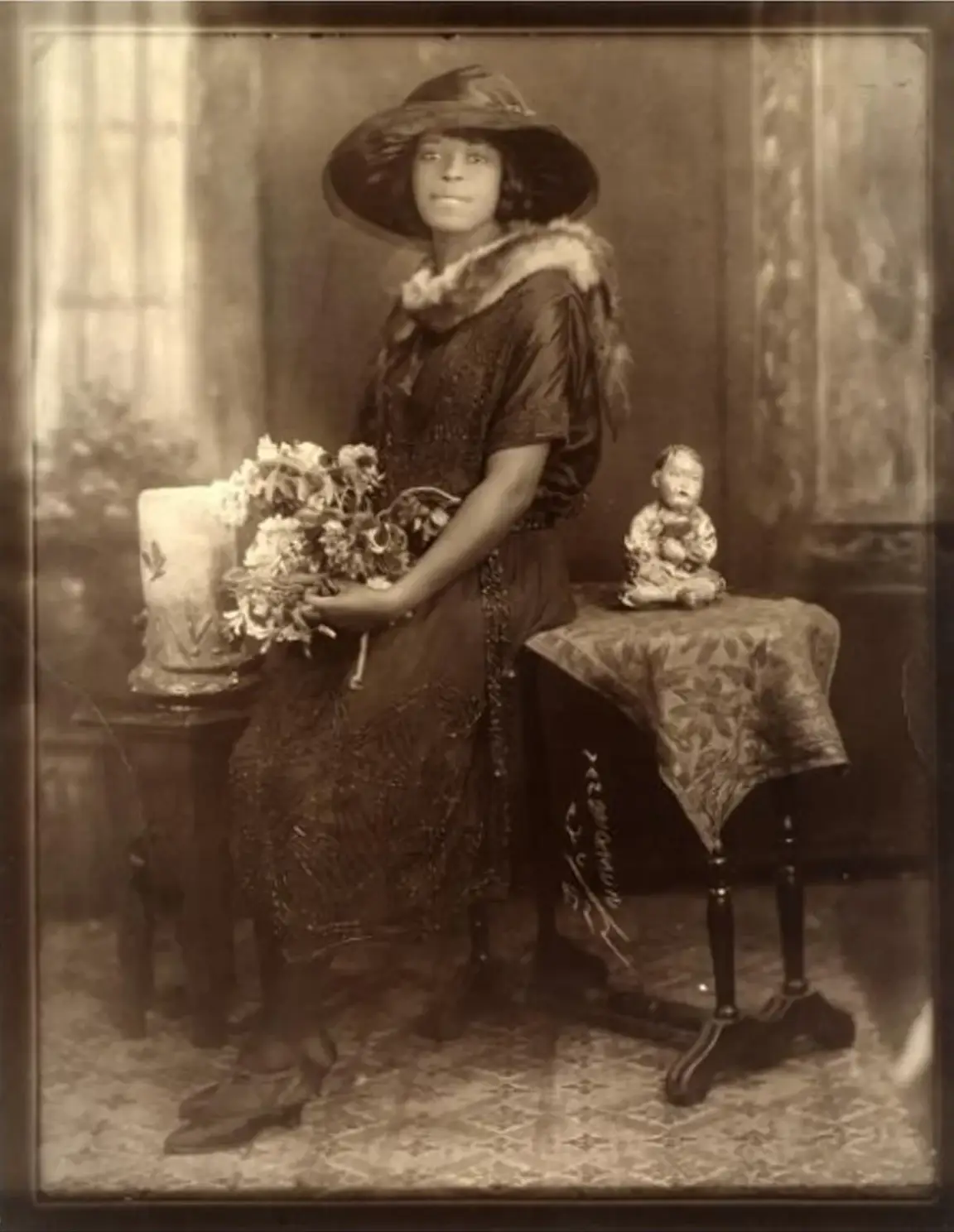
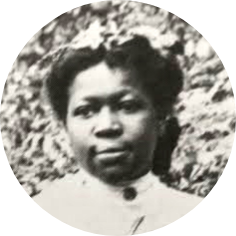
Focus on
Jennie Louise
Touissant Welcome
Visual artist, photographer and filmmaker Jennie Louise Touissant Welcome (1885-1956), also known as Madame E. Toussaint Welcome, is believed to be the first Black woman to produce and release motion pictures in America with DOING THEIR BIT (1918), a 12-part series of 2-reel documentary short films about African American soldiers in World War I. (Welcome was preceded by Drusilla Dunjee Houston, who wrote a refutation of D.W. Griffith’s racist blockbuster BIRTH OF A NATION in 1915, but Houston’s scenario was never produced.) Welcome and her husband, Ernest Touissant Welcome, established an art and music conservatory in their Harlem home, and started a film company, the Touissant Motion Picture Exchange, to release their productions. Although DOING THEIR BIT turned out to be their only venture into filmmaking, the Welcomes paved the way for other Black women to work behind the camera in the early years of American cinema, including Eloyce King Patrick Gist, Zora Neale Hurston, Tressie Souders, Maria P. Williams, Alice B. Russell, Eslanda Robeson, Elizabeth Murray Mitchell and others who have yet to be discovered.
“AFI is taking a leadership role in rethinking its focus on feature films… The significance cannot be overstated.”— Dr. Ellen C. Scott, University of California, Los Angeles
FILMMAKERS OF COLOR
Who were the most prolific filmmakers of color in the silent and early sound eras?
Native American Filmmakers
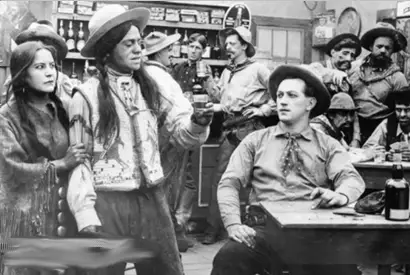
Still from TRAGEDIES OF THE OSAGE HILLS.
Directed by James Young Deer
Edwin Carewe and his brothers Wallace W. Fox and Finis Fox were citizens of the Chickasaw Nation. Although they were not always consistent collaborators, and they also worked as writers, producers and actors as well as directors, they were collectively responsible for directing nearly 100 feature films and 15 shorts from 1910-1933, with Wallace Fox continuing his career well into the sound era. Their output of features was greater than their work in short films, but their filmographies were previously incomplete before the AFI Catalog added shorts to the database. In addition, James Young Deer, whose Native American heritage has been the subject of some dispute, was also a prolific short filmmaker, directing 16 shorts along with acting alongside his wife, Red Wing (Lilian St.Cyr) a member of the Winnebago Tribe.

Noble Johnson
Noble Johnson(1881-1978) was a prolific actor and co-founder (with his brother George P. Johnson ) of the Lincoln Motion Picture Company, which is believed to be the first movie studio in the U.S. fronted almost entirely by African Americans. With a mission to expand opportunities for Black filmmakers and performers, as well as to provide quality entertainment for Black audiences, Lincoln made seven “race films” – five shorts and two features – that showcased the talent of African American storytellers at a time in which theaters in the South were still segregated. Johnson was credited as the director on one of these films (THE LAW OF NATURE) and as a writer of two (THE LAW OF NATURE and THE REALIZATION OF A NEGRO’S AMBITION), but he performed in over 100 Hollywood pictures throughout his long career (including classics such as the original KING KONG) to finance his production company, and historians speculate that he was working behind and in front of the camera more often than he was credited. Noble Johnson was notable for being cast as characters with diverse ethnic and racial backgrounds not his own. He was a pioneer in opening doors for others in Hollywood and continues to be an inspiration for independent filmmakers today.
Black Filmmakers
While much is known about Black filmmaker Oscar Micheaux, who directed 20 features and eight shorts, his work was prefaced by another Black pioneer, William Foster. With six short films to his credit, starting with THE RAILROAD PORTER (1912), Foster is a necessary new addition to the AFI Catalog – without the essential research specifically into short films during BEHIND THE VEIL, the crucial work in cinema’s early days by this pioneer and others might never have been brought to the light of day. Also predating Micheaux was Black photographer Peter P. Jones, who started his own production company and directed one feature and seven shorts, including RE-BIRTH OF A NATION (1916), a critical response to THE BIRTH OF A NATION (1915). Other Black storytellers whose filmographies were greatly truncated, or who were missing entirely from the AFI Catalog, were Hunter C. Haynes, Richard D. Maurice, Leigh Whipper, Tressie Souders, and James and Eloyce Gist, among others.
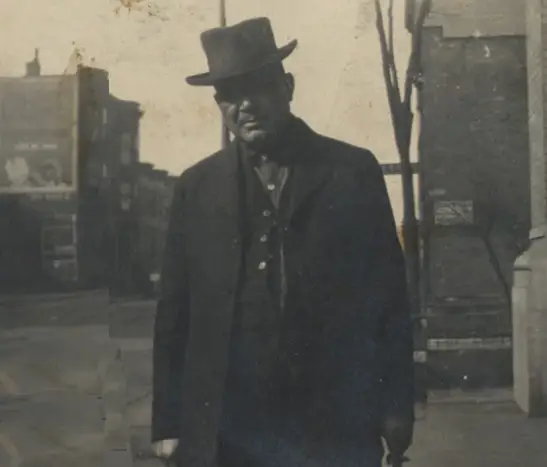
WILLIAM FOSTER
Focus onTsuru Aoki and Sessue Hayakawa
Though married for most of their adult lives and often appearing as co-stars, Tsuru Aoki (1892-1961) and Sessue Hayakawa (1886-1973) had very distinct careers and impacts on American society as two of the first Asian actors to achieve stardom in Hollywood. Both navigated the paradox of discrimination in a world that adored and fetishized Japanese culture, and both were subjected to performing in stereotypical roles, but their work represented autonomy and commitment to the craft of acting. Getting their start in short films, Aoki (who began acting in movies first) and Hayakawa worked together on a number of pictures starting in early 1914, including O MIMI SAN (Hayakawa’s first film) and THE COURTSHIP OF O SAN (both starring Aoki in the title roles). Later in 1914, the two made breakthrough performances in the features THE WRATH OF THE GODS, which was released shortly after they were married in May 1914, and THE TYPHOON. The success of these films led to extensive careers for both actors, and Hayakawa eventually started his own studio to produce movies that defied Asian stereotypes. While history has widely overshadowed Aoki in its celebration of Hayakawa’s achievements as Hollywood’s premier Asian leading man, Aoki was in fact the first of the two to secure a movie contract, and she was responsible for introducing producers to Hayakawa’s talent.
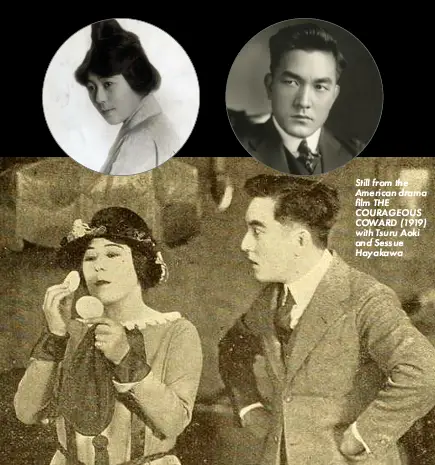
“A huge leap forward for film scholarship.”– Dr. Allyson Nadia Field, University of Chicago
Learn more in the AFI Catalog

Over three years (2022–2025), AFI added nearly 45,000 short film records into the AFI Catalog database from project partner EIDR (Entertainment Identifier Registry). This represents a collection of metadata about nearly every known short film released in the early days of American cinema. With generous support from the National Endowment for the Humanities, the AFI Catalog researchers were able to locate and explore more than 4,000 of these films, selected for their representation of diverse voices and subject matter, and fully document their creators, production histories and the stories they told about popular culture.



































